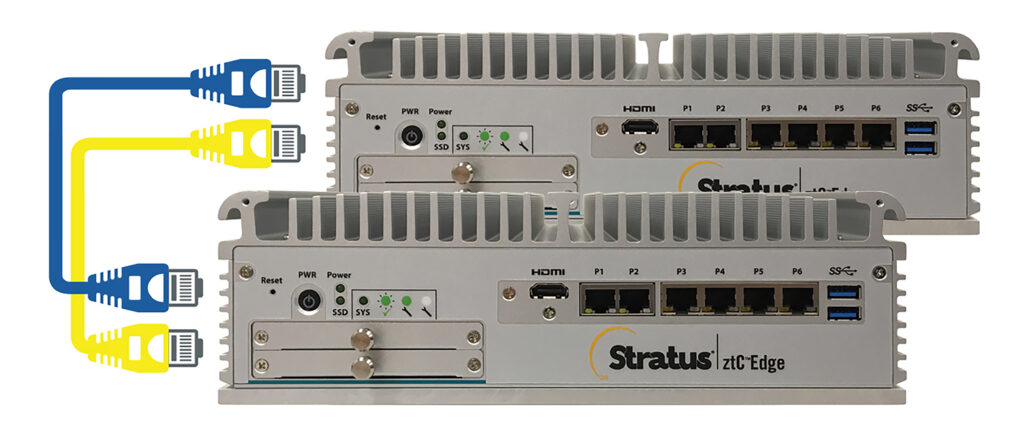
Did you always want to be an engineer? What initially interested you about this kind of career?
I knew I wanted to work with computers from a young age. I remember way back in middle school they asked each of the students what we wanted to be when we grew up and mine was really weird because I wrote Computer Programmer Specialist. Which wasn’t usually a child’s number one choice.
No one in my family was tech-savvy at all, so it was just me running head first into technology. Growing up I was given an old computer which at the time I didn’t know how it worked. Systems like Windows weren’t mainstream yet and I remember working with an old IBM system that had no graphical operating system. I was just fascinated as to how I could get it working.
Who from the engineering profession influenced your career path along the way? Is there anyone you currently admire and aspire to be like?
I attended a vocational high school where they split the curriculum into half studying electronics and half the traditional academic studies. So there, it was really the classmates I’d been with for four years that influenced me. Moving on from there and then into today, it’s always been my colleagues that have influenced me – and more so in a competitive way! I look at my peers and use them as my motivators to do better.
As for well-known engineers out there in the industry, I watch a lot of Kate Gregory convention talks. She captures a much more high-level discussion that focuses on good direction in relation to software development. And I find her really fascinating.
If you had to choose only one industry innovation to celebrate/recognize as a transformational achievement on Global Engineering Day, what would it be?
Easy. The Internet. Entirely new industries have developed from the internet, linking ones that weren’t even directly connected. It has brought such powerful information to the masses in the most consumer-friendly, cost-effective and cost-efficient way possible. Though there are definitely instances where the internet is used negatively, the open nature of so much information being out there is really impressive. It’s rebuilt and redefined a whole new way of communicating…I can definitely go on and on about the internet.
What would you like your colleagues to know about what you do every day? I.e., if you could address any misconception about your job, what would it be?
In specific relation to the software powering our ztC Edge product line, the core brain of it is driven by this proprietary, pseudo-database management system that doesn’t exist anywhere else in the industry. And because of that, myself and a small handful of people are the only ones that truly understand how it fully works and operates. That can be a little bit daunting and adds a lot of pressure. Considering how robust the codebase is and how complex the software can be, a behavioral change to the system isn’t as trivial as flipping a switch. You have to look at things in a holistic approach. Though someone might say, “Hey make this button do this particular thing” in the software, it’s not as straight forward. Especially when it’s a behavioral change in the system. There can be countless outcomes that you have to account for. And the only way you can account for it is understanding how the system works.

Can you tell us more about what it’s been like working on the ztC Edge launch team? What are some of the challenges you faced and what are you most proud of?
Well, the initial challenge with the ztC Edge 110i was to make the system as simple to use as possible to operate and function without customer or end-user interference. It’s like a built-in AI in a way that the system itself along with how the architecture is designed has a lot of proactive functions. If it senses any type of fault within the hardware or software, it will accommodate by fixing that problem – whether its load balancing, sending alerts, etc. in order to auto-correct and avoid downtime. The less people need to touch the system, we feel the more successful we are.
One of the interesting new features is the guest-monitoring feature, which was actually requested by some customers. It allows you to be able to monitor the applications running on a virtual machine using the managerial UI of the ztC Edge system. It also sets up some parameters and thresholds so that if an internal application is reaching its threshold, you’ll be notified.
Another feature that I’m proud of, which was something I’d worked closely on, is the modification of the licensing. Again, we wanted this to be as simple as possible. A big part of this release was implementing One-Click Licensing where all the customer has to do is click one button to fill out a registration form. That’s it. The system will automatically download the license and install it to the system without the customer having to go through 2-3 additional steps.
As for working with my team, we have a lot of subject-matter experts that are very knowledgeable about the software. That allows us to really take ownership of certain features and drive it forward. We can then pull in other team members for additional input and leverage what they know to have everything working together correctly.
The end product reflects me, and my colleagues work in the way that the team always has. First and foremost, we always strive for the product to be as self-sufficient and reliable for the customer as possible. And as we design new features, we always try to be cognizant of what the product needs – like we did when adding a stronger security feature to ztC Edge. We put a lot of hard work into the ztC Edge 110i so customers can have the best experience.
[sc name=”Edge_Computing_CTA_2″]